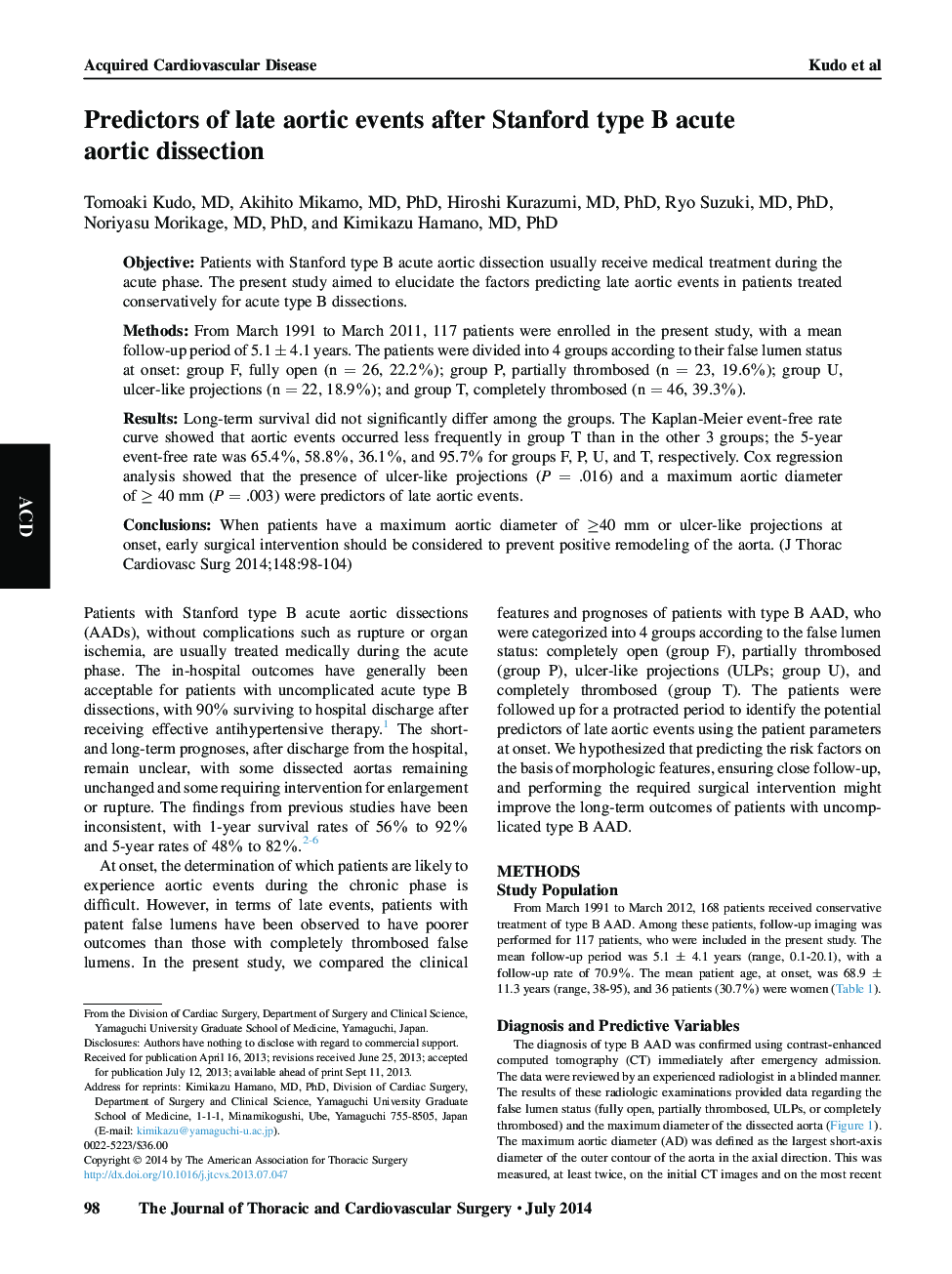| Article ID | Journal | Published Year | Pages | File Type |
|---|---|---|---|---|
| 2980750 | The Journal of Thoracic and Cardiovascular Surgery | 2014 | 7 Pages |
ObjectivePatients with Stanford type B acute aortic dissection usually receive medical treatment during the acute phase. The present study aimed to elucidate the factors predicting late aortic events in patients treated conservatively for acute type B dissections.MethodsFrom March 1991 to March 2011, 117 patients were enrolled in the present study, with a mean follow-up period of 5.1 ± 4.1 years. The patients were divided into 4 groups according to their false lumen status at onset: group F, fully open (n = 26, 22.2%); group P, partially thrombosed (n = 23, 19.6%); group U, ulcer-like projections (n = 22, 18.9%); and group T, completely thrombosed (n = 46, 39.3%).ResultsLong-term survival did not significantly differ among the groups. The Kaplan-Meier event-free rate curve showed that aortic events occurred less frequently in group T than in the other 3 groups; the 5-year event-free rate was 65.4%, 58.8%, 36.1%, and 95.7% for groups F, P, U, and T, respectively. Cox regression analysis showed that the presence of ulcer-like projections (P = .016) and a maximum aortic diameter of ≥ 40 mm (P = .003) were predictors of late aortic events.ConclusionsWhen patients have a maximum aortic diameter of ≥40 mm or ulcer-like projections at onset, early surgical intervention should be considered to prevent positive remodeling of the aorta.
